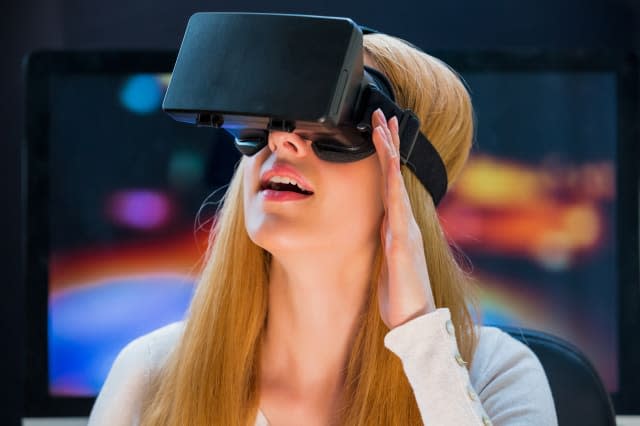Why tech giants are spending billions on virtual reality

An incredibly crude form of virtual reality was proposed in 1963. When Nasa and the US Air Force tried to use it as a tool for training pilots, they ran into a problem. The inner ear was getting disoriented and cadets were vomiting after only a few minutes using the headsets. It's been more than 50 years and the kinks are pretty close to being worked out.
In 2014, Facebook paid $2bn for a startup virtual reality company, Oculus Rift. Wall Street didn't like it at the time, because investors asked what on earth is a social media company doing with a virtual reality hardware manufacturer? Then only a couple of months later Microsoft paid $2.5bn for Minecraft. That might sound like a lot of money, but it works out at $125 for each one of the franchise's 20 million "tween" customers and the promise of locking them into the company's ecosystem for life.
Microsoft then used Minecraft to showcase its HaloLens hologram-based virtual reality system in June 2015. The release of Windows 10 in July 2015, for free to existing customers, was a bit of an aaah! moment for the technology industry. It represented a clear decision by the company to become a technology hub affecting every area of our lives.
Virtual reality gaming systems are shipping now. In fact, right now T-Mobile in the USA is running a buy one get one free offer on Samsung S7s, which come with a complementary Samsung Gear headset. Game developers are racing to get titles out in time to ride that initial wave of optimism. This is a big deal for the gaming industry. It could easily be the greatest sensation to hit the sector since the Nintendo Wii almost a decade ago. Why, you might ask?
Virtual reality gives you a completely immersive experience. Anyone who has tried it is lost for words and compares it to the escapism of illicit drugs but without the side effects. Most important of all is that it gives you a feeling of being somewhere else that you just can't get with another technology, and because of that it defies gender boundaries. That's important.
Right now there is a lot of excitement in the healthcare community about that feeling of being somewhere else. It was discovered that people who have experienced chronic pain for years are so distracted by the escapism of virtual reality that their pain goes away. One hundred million people in the USA experience chronic pain and spend over $600bn a year on treating it. Most of those treatments are opioids.
Think about this: the opium poppy was first cultivated in 3,000 BC and our pain management hasn't developed much since then. We still grind wheat into flour in much the same way we did back then, but there are very few other technologies that have not improved in the last 5,000 years.
Virtual reality has the capacity to change all that. By teaching the body to deal with pain in different ways we can reprogram our brains to block it out, and without the side effects of drugs. This is going to be huge, because the solutions we have for chronic pain don't work particularly well and many of the drugs on offer are addictive.
Downloading a pain management program from the internet and tuning out for a half hour sure beats the loss of cognitive function and long-term health consequences of drugs. Pain management offers a glimmer of how groundbreaking virtual reality is, because it opens up avenues for uses that were never even remotely envisaged by the people who came up with it in the first place.
To find out more about investing in technology – from driverless cars to artificial intelligence and quantum computing – sign up to Exponential Investor FREE daily emails and we'll send you our latest investing report on the tech stocks to watch now.
• Eoin Treacy is investment director of Frontier Tech Investor.




